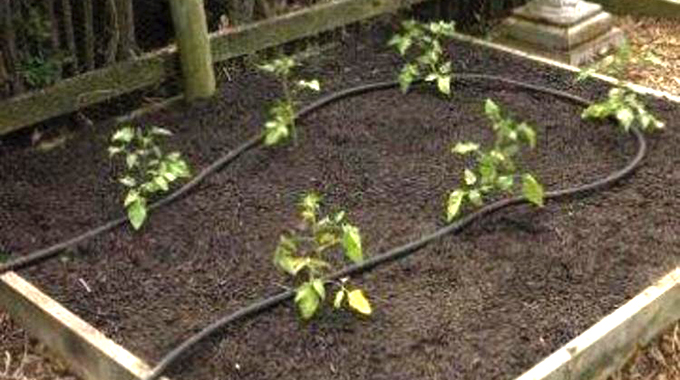Tips on saving water in the garden

Plants need water to survive and therefore the resource should not be wasted. The following tips will help plants get the water they need without wasting it.
- Use a soaker hose
Using a soaker hose on plants in the spring helps them get established. Soaker hose usage in the summer aids plants trying to survive with limited rainfall.
Dennis Patton is an extension horticulture agent at Kansas State University. He says soaker hoses put water right where it’s needed with no loss to evaporation or wind. It’s attached to a regular garden hose and the water seeps through thousands of tiny holes. Placement of the hose is important, because Patton says gravity pulls the water flow straight down.
“Normally that soaker hose is placed right alongside,” he says. “Let us say it is a row of tomatoes: it’s placed right along the side of the tomatoes. Or, it may be wrapped a couple of times around the truck of a young tree. You’ve just got to make sure the water is weeping out into the established root zone of the plant.”
The trick is knowing how long to leave it on. Patton says there is no magic number because manufacturers have different flow rates, and everyone’s water pressure varies. Keep in mind that too much water can cause just as many plant health problems as too little.
“Usually the challenge with soaker hoses is a little less at one time, but maybe a little bit more frequent,” says Patton.
“So you are just putting enough water into the root system that the plant is using what it needs – it doesn’t leach on out of the root zone. It’s really hard to say whether that’s an hour a day or an hour every two days. It’s just something you have to monitor, I think, and watch your plants and see what they are telling you.”
Some people run the hose on top of the ground when needed, others bury it under the mulch and leave it there. Patton says either way is fine. But if you bury the hose, make sure you know where it is so you don’t accidentally damage it when digging or hoeing.
- Reuse grey water
Reusing and recycling things makes environmental sense, but many people don’t think of reusing water. Grey water is water that has been used for bathing, laundry, and washing in the sink. Rather than letting this water go down the drain, you can reroute it and use it on your landscaping. Use bio-compatible soaps, and check local ordinances for rules on the storage, purification, and drainage of grey water.
- Mulch for moisture
Patton says the best way to conserve moisture is to put down a layer of mulch. “What a mulch layer does is cover up the soil so it keeps sun rays from drying it out through evaporation, and it holds that moisture in the soil. It also keeps the soil cooler for the roots to grow,” Patton says. “A properly applied mulch for a flower and vegetable garden should be somewhere about 3 inches thick.”
- Build a rain barrel
Using rain barrels to capture the rain that runs through your home’s downspouts can save litres of water over the course of the summer. While there are many store-bought models and kits available, you can build one yourself and use the water for your garden, lawn, and even watering livestock.
- Time your watering
The ideal time to water is early in the morning. Temperatures are cooler, and there’s usually less wind, which reduces evaporation. It also gives plants the chance to quickly dry off. Leaves that stay wet all night are more susceptible to disease.
- One drip at a time
Drip irrigation is the slow application of water directly to the plant’s root zone using drippers. It maintains a constant moisture level in the soil and there’s less water lost to the sun and the wind. These systems can be used on flower and vegetable gardens and with containers.
- Mind your containers
Containers and window boxes need to be watered more often than plants that are in the ground. Several companies make mats that go on the bottom of the container or gel beads that are mixed into the soil.
These absorb water when you water the plants, and hold it until the soil is dry and the plants need it. Another way to get similar results is to use a diaper. Open it up and place it lengthwise along the bottom of the container, then top with soil and add your plants. – agriculture.com









Comments